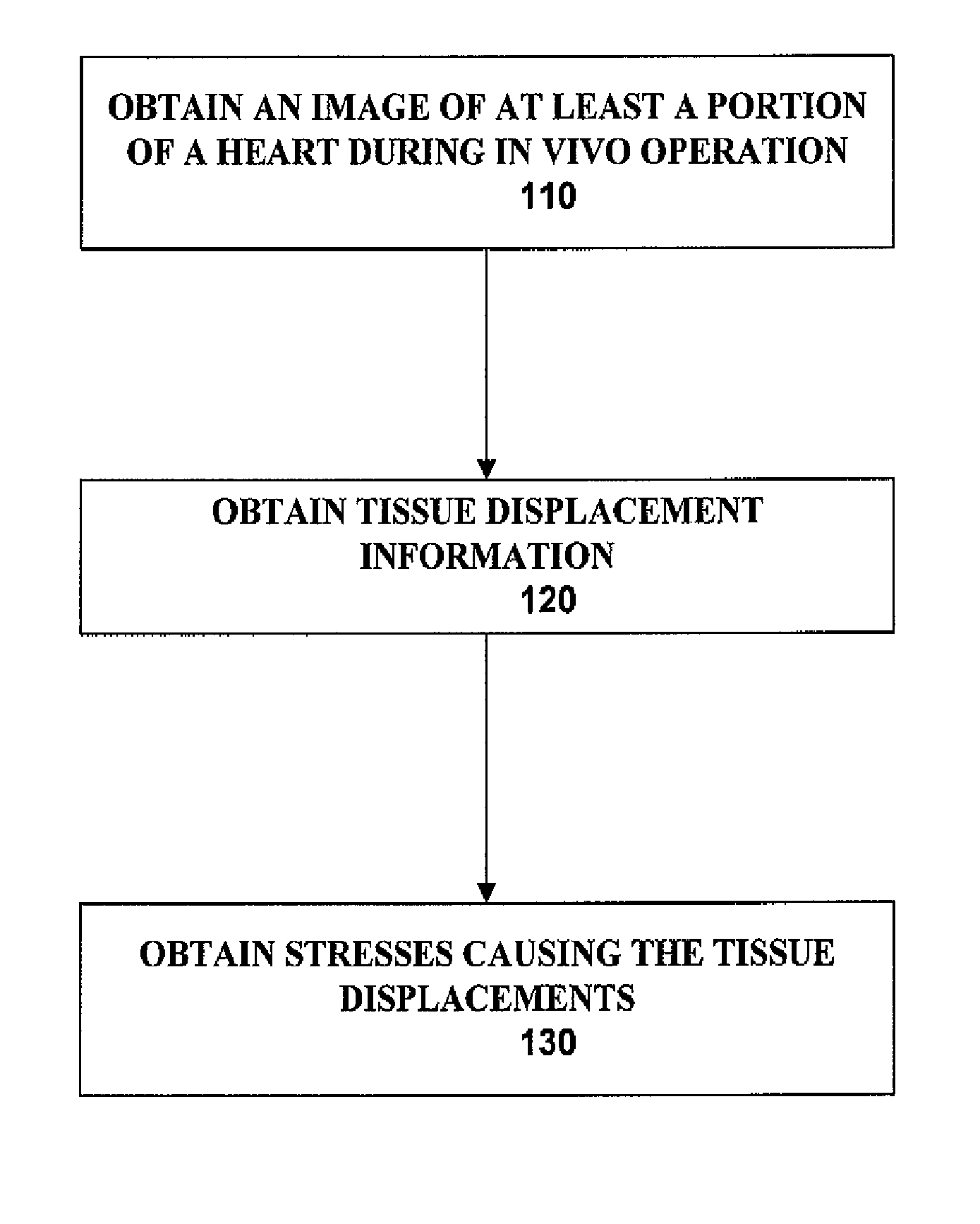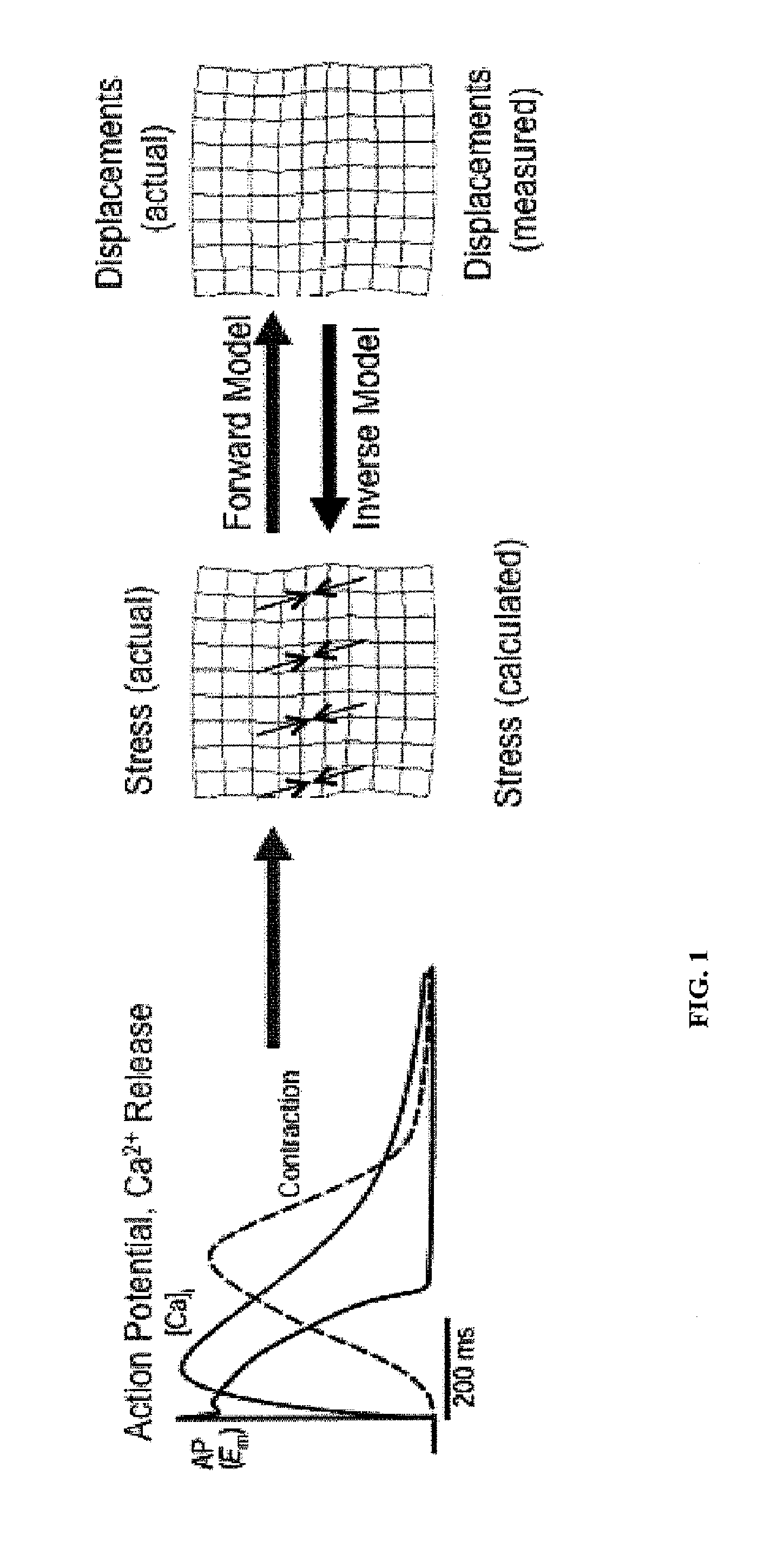Methods and systems for functional imaging of cardiac tissue
a functional imaging and cardiac tissue technology, applied in the field of imaging modalities, can solve the problems of not providing a fundamental understanding of the dynamics underlying the patient's cardiac rhythm, not being able to say with certainty, and current technology not allowing us to see action potential propagation
- Summary
- Abstract
- Description
- Claims
- Application Information
AI Technical Summary
Benefits of technology
Problems solved by technology
Method used
Image
Examples
Embodiment Construction
[0015]In one embodiment, the method of these teachings includes obtaining an image of at least a portion of a heart during in vivo or in vitro operation, obtaining, from the image, tissue displacement information, and obtaining, from the tissue displacement information, stresses causing the tissue displacements, whereby information on action potential inducing the stresses can be obtained. In one instance, the determination of stresses for each pixel or nodal point in a group of pixels or nodal points is obtained by operating on displacements for each pixel or nodal point in a group of pixels or nodal points rather than by operating on each pixel or nodal point separately.
[0016]One embodiment of these teachings includes a new imaging modality that is based on the ability of present day ultrasound to detect wave-induced tissue deformation at depth, that will allow the viewing of the propagation of action potentials deep within myocardial tissue, thereby helping to clarify these clini...
PUM
 Login to View More
Login to View More Abstract
Description
Claims
Application Information
 Login to View More
Login to View More - R&D
- Intellectual Property
- Life Sciences
- Materials
- Tech Scout
- Unparalleled Data Quality
- Higher Quality Content
- 60% Fewer Hallucinations
Browse by: Latest US Patents, China's latest patents, Technical Efficacy Thesaurus, Application Domain, Technology Topic, Popular Technical Reports.
© 2025 PatSnap. All rights reserved.Legal|Privacy policy|Modern Slavery Act Transparency Statement|Sitemap|About US| Contact US: help@patsnap.com



